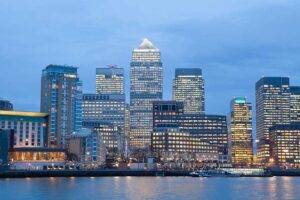
Canary Wharf, the iconic business district in east London, is undergoing a significant transformation as it adapts to the changing needs of its tenants and the local community.
With a rise in flexible working and the departure of some major banks, Canary Wharf Group (CWG) is diversifying its focus and exploring new sectors to inject new life into the area. This article explores the evolving landscape of Canary Wharf and the steps being taken to ensure its continued success.
The Shift in Occupancy
Over the years, Canary Wharf has been synonymous with the financial industry, housing numerous banks and financial institutions. However, the rise of flexible working and changing work patterns have led to a shift in occupancy within the district. According to property information provider CoStar, the office vacancy rates at Canary Wharf reached 14.8% in the second quarter of this year, the highest since 2005. This vacancy rate reflects the changing dynamics of the area, with some banks relocating to other parts of London, such as the City.
HSBC, one of the major financial institutions based in Canary Wharf, recently announced its move to the City, and Barclays is sub-letting a significant portion of its office space in the district. However, it’s not all doom and gloom for the financial sector in Canary Wharf. Citi bank, for instance, has expressed its commitment to remain in the district for at least the next 30 years. Despite these changes, Canary Wharf remains an attractive destination for businesses, with its state-of-the-art infrastructure and amenities.
A New Purpose: Diversification into Science, Retail, and Housing
Recognizing the need for adaptation, Canary Wharf Group is embracing a new purpose and diversifying its focus beyond the financial sector. With the growing demand for science, retail, and housing, CWG is seizing the opportunity to transform the district into a vibrant community that caters to a diverse range of needs.
Embracing the Sciences
Canary Wharf is set to become home to Britain’s first laboratory skyscraper, a groundbreaking project that aims to redefine the life sciences landscape of London. The development at North Quay, known as Canary Wharf 2.0, will address the long-standing shortage of laboratory space in the country while fostering innovation and collaboration within the life sciences industry. This ambitious project not only showcases the district’s commitment to diversification but also positions Canary Wharf as a hub for scientific research and development.
Creating a Mixed-Use Neighborhood
As part of its diversification strategy, CWG is investing in the development of a mixed-use neighborhood within Canary Wharf. Wood Wharf, located to the east of the main skyscrapers, is an ongoing residential estate project that aims to provide a vibrant community with a multitude of amenities. Upon completion, Wood Wharf will feature 3,600 flats, retail spaces, bars and restaurants, a school, a doctors’ surgery, and vast public spaces. This comprehensive development reflects the changing preferences of Londoners, who seek vibrant communities that offer easy access to leisure facilities, shops, and essential services.
Shobi Khan, the CEO of CWG, emphasizes the importance of adapting to the needs of a growing and diverse population. He states, “London is undergoing constant reinvention as the needs of its diverse, growing population change. Canary Wharf 2.0 was born out of the recognition that Londoners increasingly desire vibrant communities with accessible green spaces, leisure facilities, shops, restaurants, schools, and medical services.” With more than 3,500 residents already calling Canary Wharf home, the district is well on its way to becoming a thriving mixed-use neighborhood.
An Exciting Future Ahead
As Canary Wharf adapts to the changing landscape, it remains a beacon of business and innovation in London. While the departure of some banks may have led to increased office vacancy rates, the district is responding proactively by diversifying its focus. Through a commitment to science, retail, and housing, Canary Wharf Group is transforming the area into a vibrant community that meets the evolving needs of its residents and businesses.
The future of Canary Wharf looks promising, with innovative projects such as the laboratory skyscraper and the development of Wood Wharf. By embracing new sectors and catering to a diverse range of needs, Canary Wharf is cementing its position as a thriving and adaptable district within the ever-changing landscape of London.
Read more:
Canary Wharf: Adapting to a Changing Landscape




